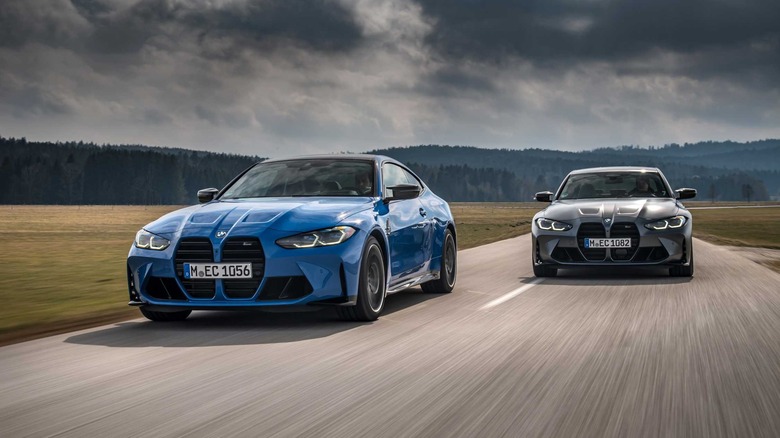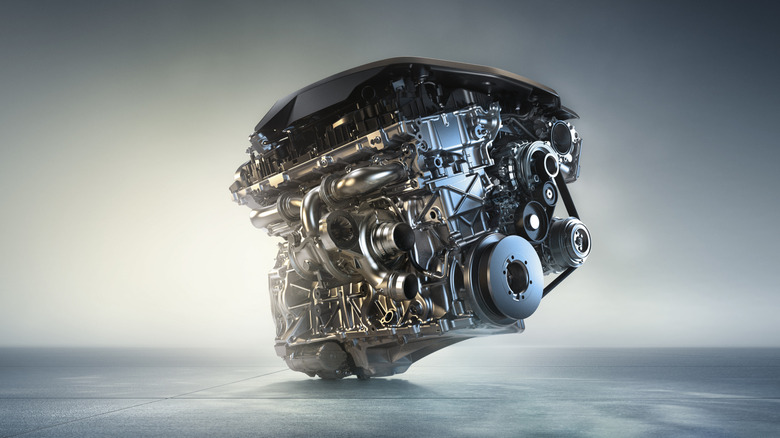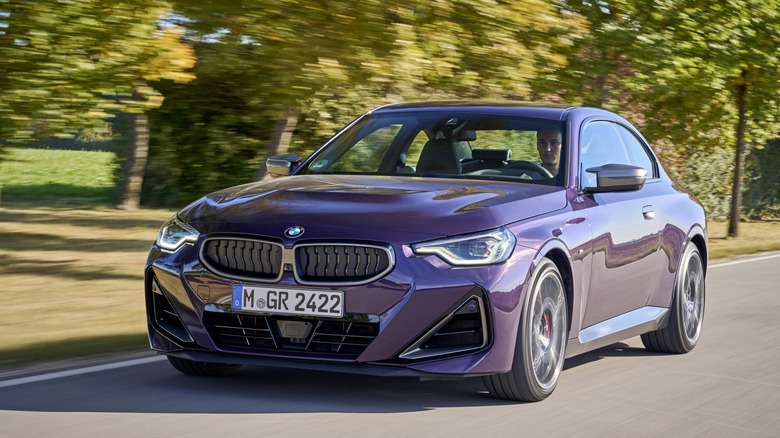Why BMW Doesn't Use V6 Engines (And Never Has)
If you've ever opened up a BMW's hood before, chances are you're either looking at a V8 or a straight six. The latter configuration has become something of a de facto trademark for the marque, with the configuration in near-constant use for almost a full century. Also known as an inline-six, this engine type is defined by having six cylinders in a single row, nothing more or less.
These days, straight sixes are making a resurgence, featured by mainstream brands like Mazda. Historically, however, they tended to be more for base-model cars, SUVs, light trucks, or more specialized sports cars. Most famous straight sixes, like the 4.0L from AMC / Jeep, the 2JZ from Toyota, the RB series from Nissan, all the way back to the old Stovebolt Sixes from GM, all fit these categories. And in passenger cars, the six was generally the "base" engine versus the more potent (and arguably more desirable) V8 options, such as the standard Chrysler Slant Six versus all the small and big block V8 offerings. Why, then, did BMW defy conventions and retain this configuration when companies like Mercedes-Benz, Audi, Lexus, Cadillac, and others deviated decades earlier in their luxury offerings?
The answer is deceptively complicated and dives into what exactly defines a straight six as opposed to other engines, beyond the obvious six cylinders in a row. It relates to how the engine configuration is balanced, its simplicity, how it produces power in comparison to other configurations, and how it fits into the BMW's engine bay. Moreover, its inherent smoothness and exhaust header design lend a certain sound and feel to the engine that's remained a symbol of BMW for decades. While the company has certainly experimented with V6 configurations in oddball prototype units, none have proven satisfactory as a replacement for the straight six.
The distinct characteristics of a straight six
Functionally speaking, a straight six is a pair of three-cylinder engines stuck together on a common crankshaft; when cylinder one moves up, so too does cylinder six. Two moves up with five, and three with four. The basic configuration has an even firing sequence in BMWs, meaning the cylinders fire one at a time. First is one, the forward-most cylinder, then as it goes down from ignition, it brings up cylinders two and five (they move together). Cylinder five then fires, being the second cylinder on the back-half of the block.
In other words, the firing goes front-back-front-back, with each cylinder being mirrored. This means that you have one set of cylinders at the top, one set at the bottom, and one set in the middle, making for perfect mechanical balance within the engine geometry. All that is a scientific way of saying that straight sixes are inherently exceptionally smooth. In fact, the engines are so smooth that you can balance a coin on a BMW straight six while it's running. These fundamental laws also apply to V12s, which are just two straight sixes meshed together. By comparison, inline fours and threes both feature inherently unbalanced designs, albeit for different reasons.
Because straight sixes are naturally balanced and use a single cylinder head rather than two, they have an advantage. To create a perfectly balanced V6, each cylinder bank needs to be 120 degrees apart, making for an exceptionally wide engine. BMW, meanwhile, just slots the six in at an angle to eliminate any height clearance issues.
Why BMW continues to use them
BMW's design template for its original 1930s-era automotive engine began back in World War I. BMW was originally an aircraft company (hence the propeller logo), and airplane engines are mechanically near-identical to car engines. The straight six likely found its way into cars as much for convenience as for the hard science behind how they work.
Straight sixes have a few other distinct characteristics. Firstly, they sound noticeably different from V-configurations, giving BMWs a unique audio signature. Secondly, when automakers transitioned to V6s, it became difficult to go back to straight sixes because of how long they were, which meant you either had to lengthen the front or downsize the engine. BMW, meanwhile, simply never changed the formula in the first place (apart from its robust V8 offerings), so its engine bay is designed with straight sixes in mind. There's no internal documentation concerning these decisions, but the longer hood length certainly adds to its unique silhouette, and the smoothness likely helps with simplifying other mechanical devices in the car.
In short, straight sixes have certain trade-offs — you get smoothness and simplicity in exchange for a somewhat awkward configuration to fit inside a compact vehicle. But if you have the formula working, why bother fixing what isn't broken to begin with?


